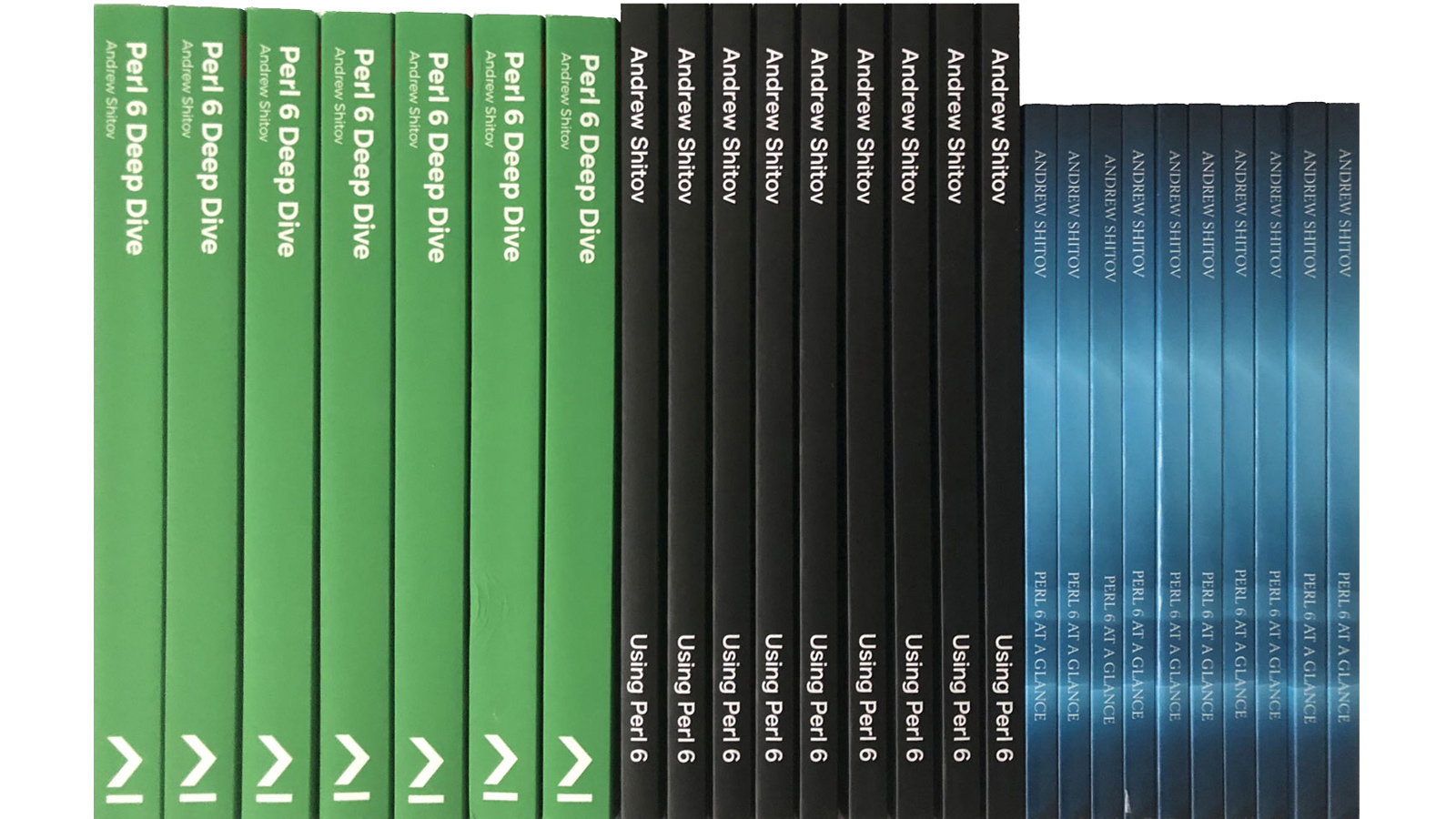N. B. You can download all books in the PDF format from GitHub: github.com/ash/books.
There were two seasons of Perl 6 books. Back in ±2003, a few books were published that explained some basic concepts of Perl 6 of that time and were also giving some Parrot internals, as it was the only virtual machine then.
In 2017, the second wave of the Perl 6 books came. Currently, there are 7 books available, you may find all of them at this link: allperlbooks.com/tag/perl6.0. Explore the list and choose the one or more that suits your needs the best.
On this page, let me list the books that I wrote myself.

Perl 6 at a Glance
This book is about Perl 6, a programming language of the Perl family. It covers many basic and deep topics of the language and provides the initial knowledge you need to start working with Perl 6. The book does not require any previous knowledge of Perl.
The Perl 6 programming language has a long story. It emerged in 2000 and got its first stable specification in 2015. This book is the first one based on the standard 6.c of the language.
A lot of examples and explanations let you follow the ideas of the language design and will help you to start programming in Perl 6 right away.
Published by DeepText in December 2016
deeptext.media/perl6-at-a-glance — buy electronic or paper copy.
perl6.online/perl6-at-a-glance — read online for free.
Perl 6 Deep Dive
This book is an end-to-end guide that will help non-Perl developers get to grips with the language and use it to solve real-world problems.
Beginning with a brief introduction to Perl 6, the first module in the book will teach you how to write and execute basic programs. The second module delves into language constructs, where you will learn about the built-in data types, variables, operators, modules, subroutines, and so on available in Perl 6. Here the book also delves deeply into data manipulation (for example, strings and text files) and you will learn how to create safe and correct Perl 6 modules. You will learn to create software in Perl by following the Object Oriented Paradigm. The final module explains in detail the incredible concurrency support provided by Perl 6. Here you will also learn about regexes, functional programming, and reactive programming in Perl 6.
By the end of the book, with the help of a number of examples that you can follow and immediately run, modify, and use in practice, you will be fully conversant with the benefits of Perl 6.
Published by Packt in September 2017
www.packtpub.com/application-development/perl-6-deep-dive — buy or subscribe.
Using Perl 6
This book is a collection of different programming challenges and solutions in Perl 6. It can be used as an exercise book, when you are learning Perl 6, or as a reference book when you are teaching it.
It is assumed that the reader knows the basics of Perl 6 and wants to have some practice.
In this book, you will find 100 solutions of different common programming challenges that are written in Perl 6. Once you already know some of the basics of the language, it is a good idea to spend some time trying to do some exercises and the most popular tasks, which will vary from displaying the ‘Hello, World!’ greeting, to creating a parser for the command-line calculator.
The seven chapters are divided into two parts, which cover the essential parts of Perl; firstly, the strings, numbers, and aggregate data structures, and secondly, of Perl 6 in particular, namely, the new regexes, grammars, and parallel computing.
Each of the 100 tasks presented in the book demonstrates the main idea of how to approach a problem; big chunks of code are avoided, as much as possible.
deeptext.media/using-perl6 — buy paper copy or an e-book.
perl6.online/using-perl6 — read online for free.